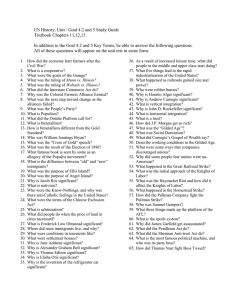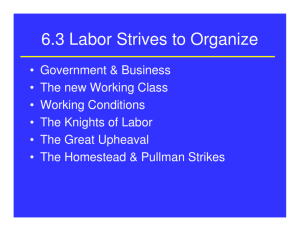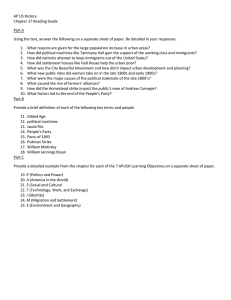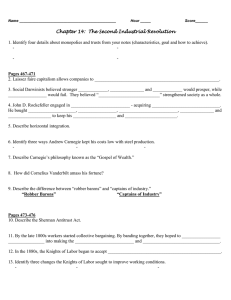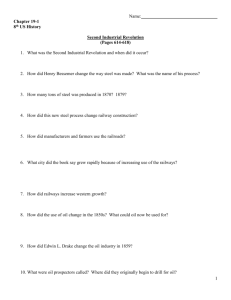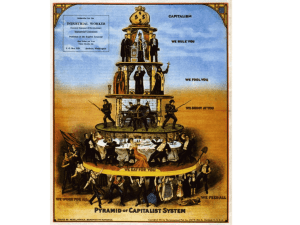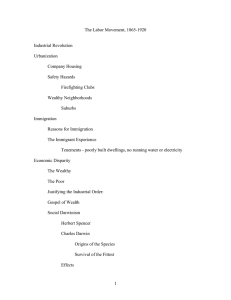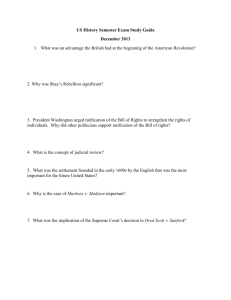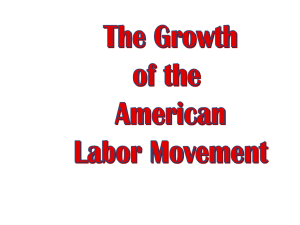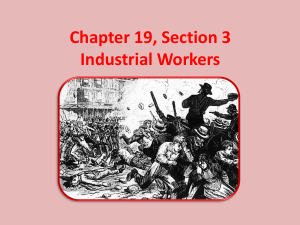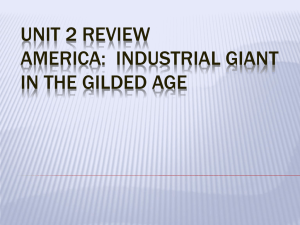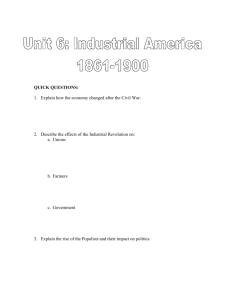APAH Reading Guide Name: Chapter 17 Directions – After reading
advertisement
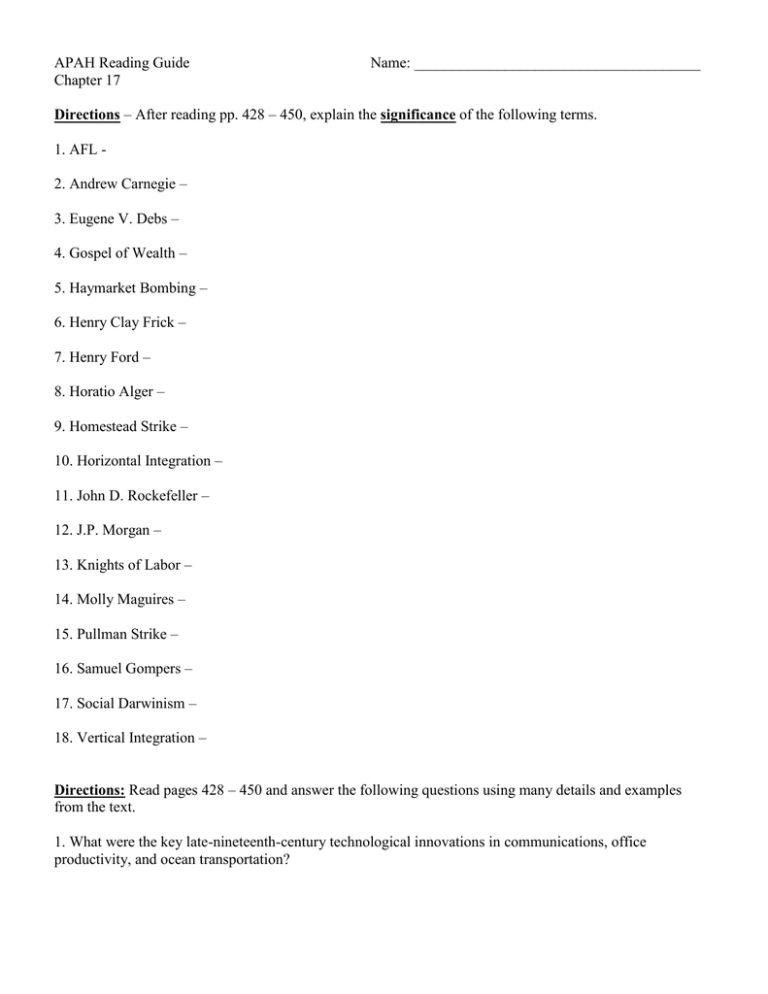
APAH Reading Guide Chapter 17 Name: ______________________________________ Directions – After reading pp. 428 – 450, explain the significance of the following terms. 1. AFL 2. Andrew Carnegie – 3. Eugene V. Debs – 4. Gospel of Wealth – 5. Haymarket Bombing – 6. Henry Clay Frick – 7. Henry Ford – 8. Horatio Alger – 9. Homestead Strike – 10. Horizontal Integration – 11. John D. Rockefeller – 12. J.P. Morgan – 13. Knights of Labor – 14. Molly Maguires – 15. Pullman Strike – 16. Samuel Gompers – 17. Social Darwinism – 18. Vertical Integration – Directions: Read pages 428 – 450 and answer the following questions using many details and examples from the text. 1. What were the key late-nineteenth-century technological innovations in communications, office productivity, and ocean transportation? 2. What developments allowed the widespread use of electricity as a source of light and power to become commonplace by the turn of the century? 3. Explain the new Bessemer process developed for the large-scale production of durable steel. What impact did the vast expansion of steel production have on transportation industries in the late nineteenth century? 4. Describe the beginnings of the oil industry in the United States. What was the main use of petroleum at first? 5. Although the age of the automobile and the era of significant American aircraft production would not fully arrive until the 1910s and 1920s, what developments of the 1890s and the first decade of the twentieth century laid the basis for the later boom? 6. How did expanding research and development activities, "scientific management," and mass production reshape American industrial production? What role did General Electric and the Ford Motor Company play in these early twentieth-century developments? 7. How did the rapidly expanding railroads of this era contribute to the expansion of the American economy? 8. Describe how railroads took the lead in new patterns of business organization and management in the late nineteenth century. What legal and financial advantages does the corporation form of enterprise offer to business and investors? 9. Compare and contrast the vertical and horizontal integration strategies of business combination. Which approaches did Andrew Carnegie and John D. Rockefeller utilize? What "curse" of the business world was consolidation designed to attack? 10. Although the term "trust" came to be a general term for any big business, there were legal differences between a formal "trust" and a "holding company." Explain the differences. What were the advantages of the latter? 11. What kept alive the ideology of individualism and the faith in the "self-made man" among the American masses? 12. Compare and contrast Social Darwinism and the "gospel of wealth." Who was the principal proponent of the latter? 13. Describe the radical and idealistic alternative visions of late-nineteenth-century writers and activists. How realistic were such views? 14. What negative consequences of monopoly did many Americans come to fear? 15. America’s new urban working-class was drawn primarily from what two groups? 16. Contrast the earlier immigrants to the United States with those who came to dominate by the turn of the century. What attracted immigrants, especially the later groups, to the United States? How did native-born Americans and earlier immigrants react? 17. What were the uncertainties and hazards of industrial labor? 18. Why did industry increasingly employ women and children? How were they treated? 19. What was America's first major, national labor conflict? How did it end? 20. Compare and contrast the organization, membership, leadership, and programs of the Knights of Labor and the American Federation of Labor. Why did the AFL succeed, while the Knights disappeared? 21. Compare and contrast the Haymarket affair, Homestead strike, and Pullman strike. On balance, what was their effect on the organized labor movement? 22. What factors combined to help explain why organized labor remained relatively weak before WWI?
